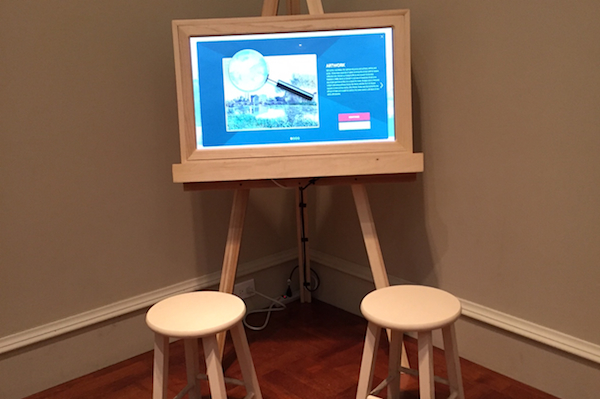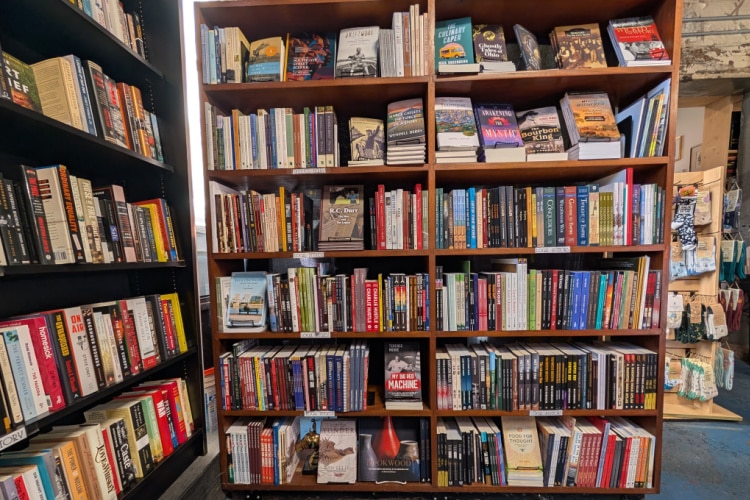The art of intractive technology sprouts at Cincinnati Art Museum
Even thought the Cincinnati Art Museum is 135 years old, the organization embraces technology as an innovative way to engage visitors, including two new touchpad interactive features.
The Cincinnati Art Museum (CAM) might be 135 years old, but the organization embraces technology as an innovative way to engage visitors.
In 2013, CAM joined the Google Cultural Institute, offering a virtual walk through of the museum and access to digital versions works of art.
“We’re also using Google to put together small online exhibitions,” says Emily Holtrop, Director of Learning and Interpretation. “For the opening of Divine Felines: Cats of Ancient Egypt in June, we are creating an online exhibit of other cats you can see at the museum. We hope to create more of these smaller web-based exhibits using themes that bring together objects from the permanent collection that would not usually be seen together.”
The success of these initial online efforts led to other opportunities to use technology to enhance the visitor experience. Last year, CAM started offering docent-led iPad tours of the Schmidlapp Wing, where many of the iconic pieces in the museum’s collection are displayed.
“Docents are able to use iPads to share additional content that supports the conversation,” Holtrop says. “For example, looking at our Robert S. Duncanson painting ‘Blue Hole, Flood Waters, Little Miami River,’ a docent is able to use the iPad to pull up a photograph of what John Bryant State Park looks like today. Or they’re able to show other Gainsborough portraits and compare them to ours. The iPad doesn’t replace looking at the object, it supports the looking and the conversation around the art.”
The iPads are also allowing docents to incorporate multimedia on their tours. Tours of the current 30 Americans exhibition may include listening to a piece of music by Charlie Bird Parker while viewing a painting of Parker by Jean-Michel Basquiat.
In October, CAM made a commitment to incorporate technology into the museum experience with the opening of its new Antiquities Gallery, which included two touch tables created by Paperplane Creative and Clifton Labs.
“The touch tables let us show the objects in the gallery as what they were, items from daily life,” Holtrop says. “They’re only considered art today because they’re displayed in a museum. They really are things like makeup compacts, vases and containers for storing wine. Now we can show visitors how these pieces were used.”
The touch tables offer multiple views of each object on display, fun facts and how it was acquired by the museum. An interactive map and timeline will show where the object was created as well as other objects in the gallery that were made around the same time.
In addition to providing layers of information, the touch tables also include games related to the objects. Visitors can make a virtual vase or mummy, and other games explore languages and religions of the ancient world.
At the end of April, CAM launched two new touchpad interactive features. Leave Your Impression in the Impressionist gallery encourages visitors to try their hand at “painting” part of a work by Renoir, Monet or Sisley. Context and Discovery lets visitors explore six 20th Century American masterpieces in greater detail, including additional information on the artists and the works.
CAM also continues to incorporate analog interactive features in the galleries. Visitors to the Asian art galleries can touch actual brushes, and 30 Americans has a feedback wall asking visitors to comment on pieces in the exhibition.
“We could have used technology to ask people how they felt about a particular object,” Holtrop says. “But being able to see everyone else’s responses is so much more impactful and creates conversations.”
CAM also participated in the Arts x Tech hackathon last month with a challenge that would allow people to pre-plan their visit and to create their own gallery of favorites from the museum collection.
“We aren’t going to use technology just because its flashy and fun, if it doesn’t get the message across,” Holtrop says. “Emerging technology in museums is great. But we’re surrounded by screens all the time, and that can interfere with what we’re looking at, so it’s about finding the balance between having too many screens or using screens as support. We want to encourage people to come into the museum and enjoy looking at art while extending their museum experience beyond their visit.”


















